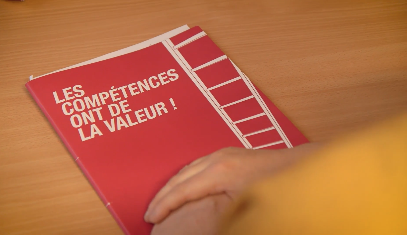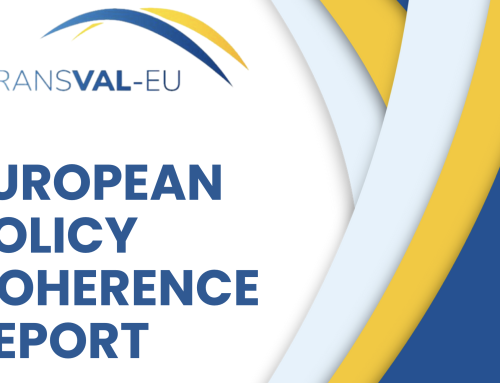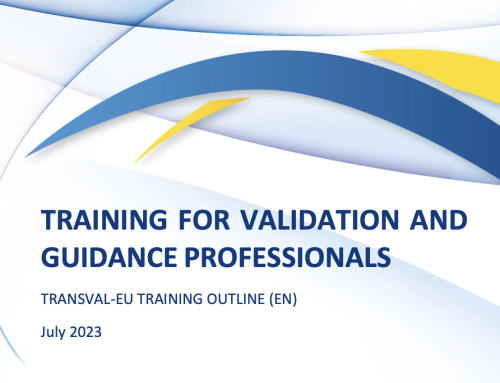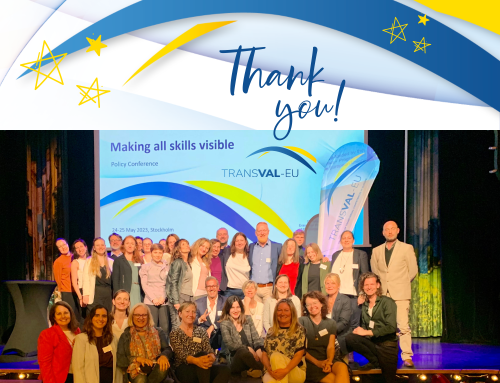The validation of competences: the guidance process
The goal of the validation of competences in francophone Belgium is to certify candidates’ professional competences acquired in formal, non-formal and informal ways. The certificate that the candidates receive after a successful practical test (‘Titre de compétence’) increases their employability or gives them the chance to resume their studies/training. The validation of competences is open to any person aged 18+.
The core of the process of validation is the practical test that the candidate has to undergo in a validation Center. This test is preceded by a pre-test guidance session and followed by a post-test guidance session.
This article aims to give more insight into what guidance means in relation to the process of validation of competences within the Belgian context. The guidance process is an essential stage for validation candidates, which enables them to be fully involved in the process and to see its relevance. It takes place in the validation center, before and after the test.
What does guidance in relation to the validation of competences mean and how does it work in practice? Prior to the test, each candidate is entitled to correct and complete information and help in the choice of the qualification to be validated, with regard to his/her objective(s), and to his/her previous professional and extra-professional experience, so that he/she is aware of his/her chances of success on the practical test. The guidance allows the candidate to make an informed choice about the ‘Titre de compétence’ that corresponds to his/her experience. It also helps the candidate have a clearer view on his/her chances of success and thus helps avoid situations of failure.
Before the test
When candidates first contact the Center, they have very different levels of information about the ‘Titre de compétence’ and the tests. The Center must ensure that the candidates have access to complete and accurate information about their rights, the ethical chart of validation, how the process of validation works and what it supposes, how the ‘Titre de compétence’ can be used once delivered, etc. Each validation Center has developed its own information and guidance practice, depending on its internal organization, the occupations/Units of competences that it validates, the public, etc. Following the general information on the validation process, a representative of the validation Center, preferably a specialist in the field, begins an individual guidance interview with each candidate.
The guidance interview is the conversation between the field professional and the candidate that will allow the candidate to reflect on his/her skills in relation to the task to be performed on the day of the test. The candidate’s reflection should enable him/her to make informed choices. The guidance interview will focus on the candidate’s experience and knowledge of the target occupation, as well as the nature of the competences assessed during the test and the specific procedures for taking the test. A positioning tool is also used at this stage, whose role is to: direct the candidate towards the Unit of Competence that best suits him/her; alert the candidate to the difficulties of the test; standardize the guidance process to ensure fair treatment of all candidates. By using the positioning tool as a framework for the interview, it is possible to conduct a complete guidance interview. Each question is an opportunity to explore the candidate’s experience and to relate it to what is required in the test. At the end of the guidance interview, the practical test can be recommended or not.
In general, the positioning tool allows the following questions: Is the candidate well oriented? Is the candidate’s experience recent? Is the candidate’s experience related to one or more Units of competence of the same occupation? The positioning tool is not objectified or supported by evidence. It relies solely on the answers given by the candidate and, therefore, on trust. Insofar as the purpose of this tool is not to inform the evaluator but to help the candidate make a decision, its declarative side is not problematic. The positioning tool is above all intended for the candidate. It must allow him/her to reflect on his/her intentions and his/her choice in terms of validation. It is not a questionnaire or a survey that verifies the pre-requisites for validation. The positioning tool serves as a common reference framework. It highlights the essential elements that must be mastered to pass the test. It is the basis for the guidance interview.
If the candidate’s chances of success seem insufficient, the representative of the validation Center will clearly explain why, and will possibly guide the candidate towards additional training before taking the test. During the guidance process, the validation Center representative also makes sure that the candidate has the appropriate level of French allowing him/her to understand the instructions during the test.
After the test, the candidate receives the results by mail after the jury has deliberated. If the candidate is successful, he/she will receive a letter of congratulations attached to the ‘Titre de competence’. The website of the Consortium de validation des compétences also explains the different ways to enhance the value of the qualification. Some Centers send successful candidates the contact information of potential employers looking for candidates.
In case of failure, different practices exist: some Centers deliberate directly and communicate the results in real time to the candidate. The Center manager or the evaluator reviews the test and gives the candidate feedback. This way, the candidate becomes aware of areas that he/she does not master sufficiently. If they fail by a small margin, the Center offers the candidate a chance to retake the test in the coming weeks. In other Centers, the Center manager (after having obtained the necessary information from the evaluator) or the evaluator contacts the candidate and gives him/her feedback, taking also into account the possibilities that the candidate has (training, stress management, etc.) and recommends short training courses (self-education or other) related to the job. Other Centers insist on post-guidance during the information session and invite candidates to call if they fail.
After the test
The candidate receives the results by mail after the jury has deliberated. If the candidate is successful, he/she will receive a letter of congratulations attached to the ‘Titre de compétence’. The website of the Consortium de validation des compétences also explains the different ways to enhance the value of the qualification. Some Centers send successful candidates the contact information of potential employers looking for candidates.
In case of failure, different practices exist: some Centers deliberate directly and communicate the results in real time to the candidate. The Center manager or the evaluator reviews the test and gives the candidate feedback. This way, the candidate becomes aware of areas that he/she does not master sufficiently. If they fail by a small margin, the Center offers the candidate a chance to retake the test in the coming weeks. In other Centers, the Center manager (after having obtained the necessary information from the evaluator) or the evaluator contacts the candidate and gives him/her feedback, taking
Improving guidance through the TRANSVAL-EU project
The objective of the Consortium de validation des compétences through its implication in the TRANSVAL-EU project is to strengthen the guidance phase, especially as concerns transversal competences. Currently, the guidance tools used in the validation Centers mostly focus on technical/professional competences. The objective we are pursuing through TRANSVAL-EU is to improve the guidance process by including transversal competences. Several tools will be tested during the field trials, in collaboration with the guidance practitioners so as to increase the candidates’ chances of success in the practical tests they will be taking.




